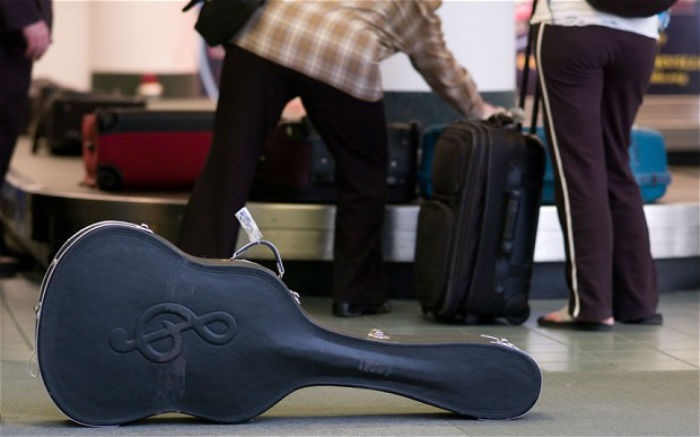Flying with Instruments: A New Era?
Congress passed a law three years ago to address the problems musicians have encountered flying with their instruments, but the regulations, which will cause the airlines to implement the law, were only published in January, 2015. And then the airlines had 60 days to get things in order to implement the new regulations. Thanks to the efforts of the American Federation of Musicians, the League of American Orchestras, Chamber Music America, the Recording Academy, Performing Arts Alliance, and many other performing arts organizations, the Department of Transportation (DOT) issued very specific guidelines as to how airlines are to handle musical instruments. The guidelines went into effect on March 6. But unfortunately problems will not go away overnight.
The spring issue of Symphony magazine has an article (beginning on page 30), written by Susan Elliott of MusicalAmerica.com, that describes some of the many horror stories musicians have experienced, and offers hope for the future. Horror stories:
- Most of us have seen the YouTube video “United Breaks Guitars,” created by David Carroll, decrying how United Airlines broke his Taylor guitar.
- Indianapolis Symphony concertmaster and member of Time for Three, Zachary De Pue, gave an impromptu concert on the tarmac when United Airlines ordered him to check his 250-year-old violin. (They let him take it aboard on the next flight.)
- The neck of Wu Man’s pipa was broken when a flight attendant made her put it in the “coat room” at the front of the airplane. To their credit, United Airlines did the right thing and not only paid to replace it, they flew Wu Man to China twice to consult with the maker. My orchestra, the Hartford Symphony, was honored to have Wu Man perform her first public concert with her new pipa. Here’s a link to a New York Times article about her pipa and its reincarnation.
I’m sure many of you have similar horror stories, most with endings like David Carroll’s, rather than Wu Man’s.
The regulations that came into effect on March 6 should change things. But it won’t be a cake-walk.
The DOT now has three classes of instruments:
- small instruments, as carry-on baggage
- large instruments, as carry-on baggage
- large instruments, as checked baggage
As carry-on baggage, board early and put it where it fits. The airlines cannot complain if it takes the space of two roller suitcases. (Repeat: get on early, even if it costs more.)
Check out the dimensions of the plane before you book a flight — will your case fit under your seat? Are the overhead bins big enough to accommodate your case? Do the research.
The new regulations do not require every airline to permit a passenger to purchase a second seat for a larger instrument, such as a cello, but do require them to follow through, if you’ve purchased such a ticket and the instrument fits in the seat and meets all safety requirements. They also encourage airlines to adopt a policy permitting musicians to purchase a seat for an instrument.
For larger instruments that must be checked, the airline must accept the instrument as baggage if the sum of the length, width, and height does not exceed 150 inches (including the case), and the weight does not exceed 165 pounds. Larger or heavier instruments may be subject to an “oversize” fee.
According to Heather Noonan, the League’s VP for Advocacy,
“Properly packing instruments for travel, asking airlines in advance about any space restrictions of the particular aircraft being flown, boarding flights early, and communicating with flight personnel at every step can smooth the way for successful travel.”
Be aware that the airlines have no requiement to reimburse a musician for a damaged instrument. Check the airline’s flight contract for the limits of their liability for damage to or loss of property before you fly.
Finally, if you do run into problems, complain to the airline but also complain to the DOT, which is ready and willing to track all such problems with musicians traveling with instruments.According to DOT General Council Katie Thomson,
“We are relying on musicians for good information about whether the airlines are complying or not… We look for a pattern and practice of violations. If we determine an airline has one, then we pursue an enforcement action and can seek both penalties and corrective action from the airline.”
I strongly recommend that you read Susan Elliott’s article if you’re planning to fly with your instrument in the near future.
Click here for more information from the TSA.
Click here for more information from the DOT.


No comments yet.
Add your comment